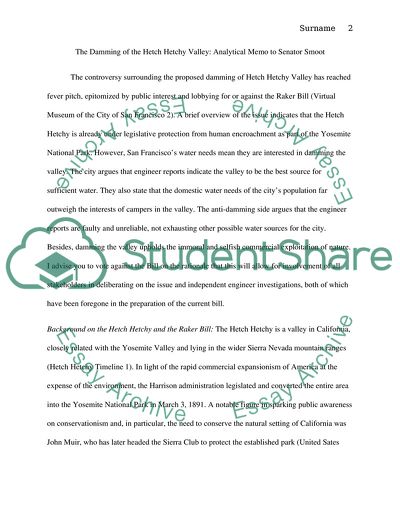Cite this document
(“Damming of the Hetch Hetchy Valley Assignment Example | Topics and Well Written Essays - 2000 words”, n.d.)
Retrieved de https://studentshare.org/law/1587834-writing-as-a-staff-an-analytical-memo-to-a-senator
Retrieved de https://studentshare.org/law/1587834-writing-as-a-staff-an-analytical-memo-to-a-senator
(Damming of the Hetch Hetchy Valley Assignment Example | Topics and Well Written Essays - 2000 Words)
https://studentshare.org/law/1587834-writing-as-a-staff-an-analytical-memo-to-a-senator.
https://studentshare.org/law/1587834-writing-as-a-staff-an-analytical-memo-to-a-senator.
“Damming of the Hetch Hetchy Valley Assignment Example | Topics and Well Written Essays - 2000 Words”, n.d. https://studentshare.org/law/1587834-writing-as-a-staff-an-analytical-memo-to-a-senator.


